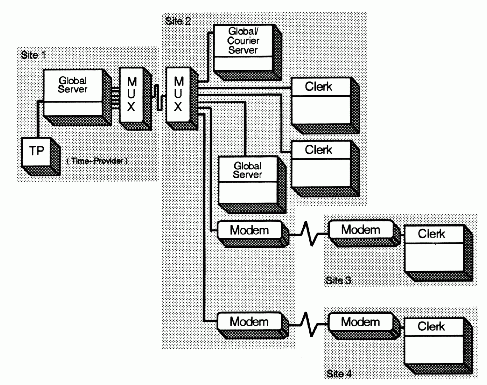WAN Cells
The following figure shows a geographically distributed cell that does not have any LANs. DTS delivers higher clock skews in an all-WAN environment than in an all-LAN environment, but it still provides synchronization that is adequate for most distributed applications. In such a network, clock skews are typically less than 5 seconds, but they may be as much as 30 seconds if satellite links are used.
DTS Configuration - WAN Networks

Many of the same recommendations for a LAN with WAN links also apply to the network that does not have any LANs. Keep the following considerations in mind when planning your all-WAN network:
· The network should have at least three servers; preferably four or more.
· Every server should be configured as a global server.
· Couriers are not required; however, you can configure any or all of the servers as couriers. The minservers attribute will force each global server to synchronize with at least two others.
· You can place the servers anywhere in the network, but place at least one at the central site; choose the most active remote nodes that are connected by the most reliable links for the rest of the servers.
· If you are using time-providers, which are recommended for this type of network, connect one to a global server node at the central site.
In a geographically distributed WAN network, also consider ease of access to the nodes by system managers or service personnel. If you locate a server at one of two nodes where traffic patterns and link reliability are equal, locate the server at the node that is convenient to your central site or management facility.